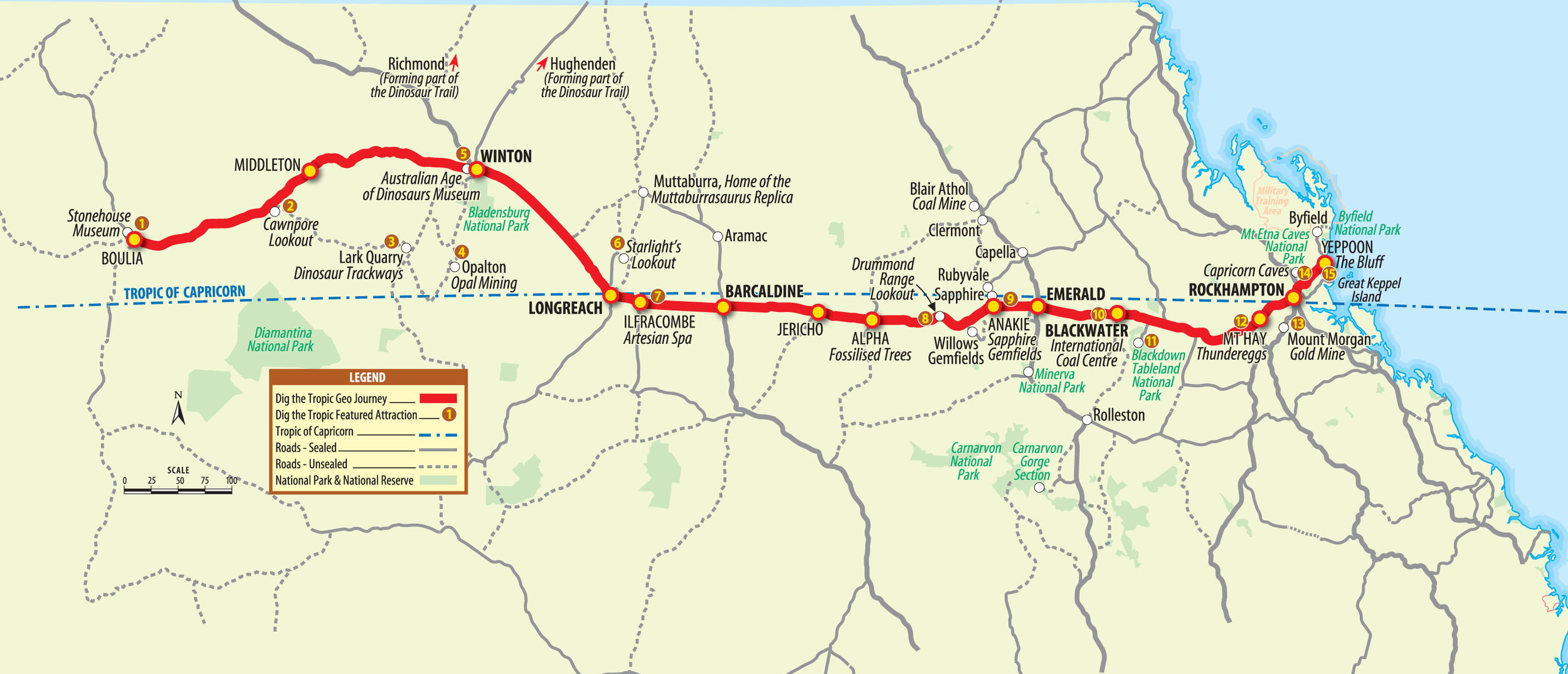
Sapphire Gemfields
Central Highlands
S23’25.190, E147’41.896
The volcano is a rumbling beast and from the depths of its belly spews hot molten rock. Ash falls like ebony snow and the smell of gases choke the air. The glow of lava sprawls across the landscape devouring everything in its path, while acid rain collects in vicious grey clouds above… Welcome to the Sapphire Gemfields 50 million years ago. Mind your step- this might be too hot to handle!
Treasure Hidden in Volcano Country
The largest sapphire fields in the Southern Hemisphere lie here, in Queensland’s Central Highlands: Anakie, Rubyvale, Sapphire and The Willows. Like many of the wonders along the Tropic of Capricorn, the Sapphire Gemfields are a product of incredible time and drastic changes in climate and environment…
Between 70 and 40 million years ago,as the earth’s crust shifted, moving Australia closer to its current position, hot spots developed below. Plugs of the Mount Hoy Basalt erupted spewing out basaltic ash and lavas. Abundant sapphires and zircons that had formed deep in the earth’s crust, blasted out as crystals in the volcanic ash. From around 2 million years ago through to today, sapphires released from volcanic material by weathering and erosion were transported by old streams, or ‘paleodrainage systems’. They are concentrated in layers of gravel known as ‘wash’ in bed and bank deposits.
In 1873 Archibald John Richardson found sapphire deposits while performing surveying work near Sapphire’s Retreat Creek. The first miners to establish claims at the Sapphire Gemfields relied on manual labour, enduring incredibly hard work in isolated conditions. Today large scale open-cut mining operations use heavy earthmoving machinery and material is processed in mechanised plants. Modern miners are required take responsibility for the environment and rehabilitate land affected by their operations.
What gemstones might I find on the Sapphire Gemfields?
Sapphires come in all shades of the rainbow, although they are typically a deep, royal blue. The Sapphire Gemfields are famous for rich, golden yellow and parti-coloured stones and are also home to the famous black star sapphires. Sapphires and rubies are made of corundum (aluminium oxide) – the second hardest gemstone after diamonds. The various colours in these corundum stones is caused by additional elements, such as chromium, iron, or titanium.
Please note: Fossicking is a regulated activity in Queensland. A fossickers licence entitles entry and fossicking on any non-exempt land in Central Queensland. You can obtain a fossickers licence when you arrive, alternatively visit the Department of Mines and Energy website for a list of agents for fossickers licences in Queensland.
‘How can I experience the Sapphire Gemfields’
Miners Heritage – Rubyvale is Australia’s Largest walk-in underground sapphire mine tour. Book on a guided tour or try your hand in the fossicking park and learn about the fascinating formation of these semi-precious gemstones.
For more information about activities at the Sapphire Gemfields contact the Central Highlands Visitor Information Centre in Emerald Central Highlands Queensland

